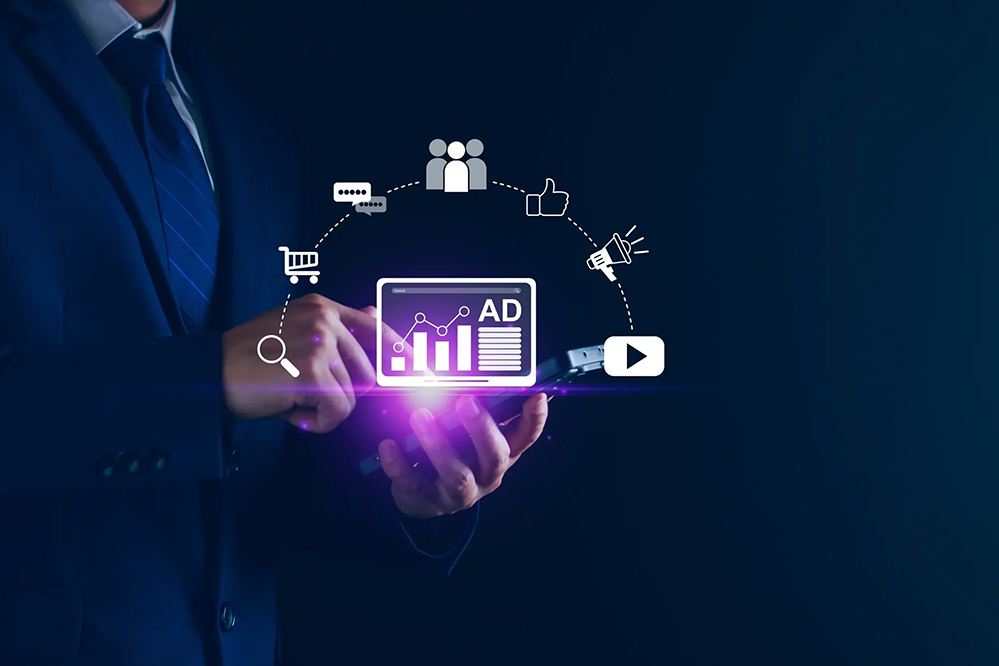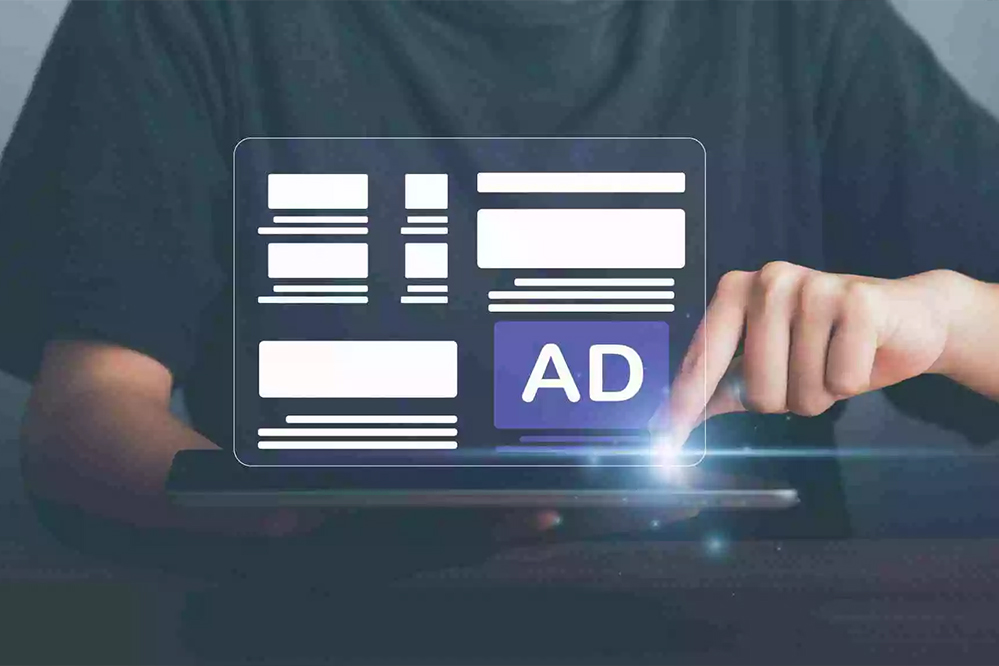The Benefits of Programmatic Advertising for San Diego Brands

Programmatic advertising may help anybody trying to reach a specific audience, from tiny local businesses to major companies. These advertisements guarantee effective expenditure and a higher return on investment, regardless of whether you are a small bakery targeting neighbourhood clients or a retail brand hoping to reach a worldwide audience.
New privacy laws like the CCPA and GDPR will reshape the market in 2024, so it is critical for marketers to choose transparent, compliant platforms.
Although there are numerous opportunities in display advertising, many firms either avoid it completely or find it difficult to get a significant return on their investment. In essence, programmatic advertising automates the purchase and sale of advertising space.
Programmatic advertising’s capacity to provide highly customized and targeted advertisements is one of the main reasons it is so important today. With the abundance of data at our disposal, marketers need to utilize it to develop precise customer segmentation and then construct messages that appeal to demographics, interests, and behaviors in order to elicit action.
What is Programmatic Advertising?
Purchasing display advertisements no longer requires human labor thanks to programmatic advertising. By 2024, programmatic advertising will be even more effective thanks to AI developments, giving advertisers access to previously unheard-of levels of audience segmentation and customisation.
These days, programmatic platforms use machine learning to deliver advertisements in real-time and optimize bids, making sure that the most relevant audiences see the advertising based on context, location, and behavior.
Here is a glossary of important phrases to help you understand how it operates:
Your command center is the demand-side platform, or DSP. A DSP is used by advertisers to specify their target market, spending limit, and bid for online and mobile ad space.
The opposite of this is the supply-side platform (SSP). Through programmatic exchanges, websites and apps sell their ad space to advertisers via SSPs.
Programmatic Ads Ad Exchange (DSP and SSP): Imagine a busy auction house. Here, marketers bid for available ad spots (such as website banners or video pre-rolls) while DSPs and SSPs communicate in real-time.
Ad Space: The online space where your advertisement is shown. This might be a sponsored social media post, a banner ad, or even a video pre-roll.
Bid: The amount you are willing to pay to have your advertisement seen. Your target audience and marketing objectives determine the maximum bid.
Despite automating processes, programmatics is still complicated. A PPC specialist serves as your strategic consultant. They are skilled in handling the subtleties of programmatic advertising, making sure your campaigns get in front of the proper audience and provide the outcomes you want.
Google Display Network (GDN), The Trade Desk, and Amazon Advertising are well-known programmatic advertising systems. Newer companies that provide cutting-edge AI-based solutions include HA LLC.
Why Programmatic Marketing Is Important

Today, digital advertising on websites is the most common kind of ad spending globally. The need for programmatic advertising will only grow as digital marketing continues to gain traction and hold its place as the major means of reaching potential customers. This is because technologies that streamline the purchasing and selling of digital advertisements are becoming more and more desirable.
According to Statista, programmatic advertising will really account for 81% of the digital advertising market’s income in 2028.
To put it simply, programmatic advertising is a crucial tool for companies to successfully communicate and generate sales since digital advertisements are the main medium via which marketers convey their ad message to consumers.
Programmatic ad purchasing has six main advantages:
- Spending that is flexible and scalable
- Wide-ranging
- Openness
- Effectiveness
- Identifying
- Data in real time
In this blog, we will go into further detail about programmatic advertising, its applications, and how a contemporary company might benefit from these platforms. Another way to get started is to watch this little video that explains programmatic advertising:
What Is the Process of Programmatic Advertising?
Programmatic advertising works via ad exchanges, where buyers compete to get top placement for their content and publishers sell digital ad space.
In order to provide advertisers the greatest return on investment, an automated system that makes use of sophisticated analytics determines where these ads should be placed on publishing sites depending on demographics and industry.
This algorithm makes sure that ads are placed on websites in the best possible way, increasing their effect and providing marketers with value. Platforms like Google Ads provide this method, where the whole transaction takes place in a matter of seconds. Because they may almost immediately reserve qualifying space for their adverts, buyers profit from this system’s immediacy.
Programmatic Advertising Benefits: Flexible and Scalable Spending
Both large and small organizations may benefit from programmatic advertising since it is fully scalable dependent on the amount spent on ad campaigns.
Depending on variables that affect the campaign’s return on investment, Google Ads, for instance, permits average daily budgets for campaigns and will decide when to utilize the money on a daily basis. Given that customers often have more time to dine out on weekends, it may be more effective to advertise for a restaurant’s marketing campaign in the days leading up to the weekend.
Think of a restaurant preparing anticipating a spike in business during the weekend. When prospective consumers are more inclined to eat out during peak hours, such after work, programmatic advertising may carefully allocate resources toward the campaign. This strategy makes ensuring that businesses’ finances are as effective as possible while taking advantage of opportunities for increased impact.
As a result, not only may budgets be spent more efficiently, but programmatic advertising offers very flexible scalability, allowing businesses to easily raise or decrease the budget as needed.
Broad Scope
Because of the wide publisher marketplace, which has millions of websites and a vast array of ad spots available, programmatic advertising offers advertisers a huge reach.
Depending on the buyer’s demands, the size of the programmatic advertising market provides a chance to reach a very wide and varied audience.
Programmatic advertising’s size distinguishes it from other forms of advertising and makes it a vital tool for contemporary marketers.
Openness
For marketers, programmatic advertising offers a degree of transparency never before possible, giving them complete control over their campaigns. This degree of openness is revolutionary because it enables marketers to carefully monitor and assess each facet of their advertising campaigns.
Programmatic advertising gives advertisers insight into the contexts in which their brand messages are most effective by allowing them to know precisely which websites their advertisements are being utilized on.
Marketers may delve into the demographics of the consumers engaging with the advertisements in addition to visibility. With this knowledge, marketers may adjust their tactics to make sure the campaigns appeal to the appropriate target demographics.
Marketing professionals may also see their return on investment because to programmatic advertising’s openness. Marketers may assess the campaign’s success indicators and determine how it affects their bottom line.
By analyzing which websites are being used and if you are reaching the proper end users with your message, programmatic advertising essentially makes it much simpler for marketers to assess the effectiveness of their campaigns and figure out how to make them better in order to reach their target consumers.
Effectiveness
Programmatic advertising’s openness has a significant impact on the effectiveness of the marketing strategy.
With real-time access to this data, marketers may adjust as needed and maximize the positioning and design of digital advertisements to maximize conversions. Programmatic advertising is an effective advertising tactic because of its data-driven methodology.
This efficiency not only benefits the actual ad, but it also just takes a few seconds to acquire programmatic advertising.
Marketers had an 11% gain in reach efficiency when they combined their ads utilizing Programmatic Guaranteed across the ten campaigns under study. This indicates that they were able to reach 11% more unique customers for the same impression spend.
Identifying
As we said, programmatic advertising’s precision enables a degree of targeting that no other contemporary marketing strategy can match. Based on the demands of the marketer, programmatic advertising may be categorized and targeted based on a number of parameters.
Various forms of targeting include, for example:
Contextual: With this kind of targeting, information is used to guarantee that the appropriate ad is shown on a relevant website.
Behavioral: Ads are shown to individuals who meet a certain behavior profile, such as adding an item to their cart but not buying it, and are driven by shopping behaviors and interests. Targeting that consumer with something they would find interesting is possible with that knowledge.
Location: Using consumer data about area or postal codes, geo-targeting makes sure that location-specific advertisements are viewed by the people to whom they are most relevant.
Device: Since advertisers can reach people on several devices, they may employ omnichannel advertisements to nurture prospects rather than relying just on one ad to be successful.
Data in Real Time
Marketers may obtain this information in real time as well, as programmatic advertising uses real-time data application and analysis. They are thus able to make judgments quickly, modifying campaigns as needed and assessing them as they are being introduced.
Marketers can now fine-tune the placement and appearance of digital advertising thanks to real-time access to a multitude of data. Marketers can react quickly to changing customer habits, market dynamics, and new trends by having the capacity to modify campaigns.
The effectiveness of programmatic advertising is shown by its capacity to convert unprocessed data into actionable information for marketers. This marketing technique maximizes the impact and effectiveness of campaigns by delivering not just advertisements but also well produced, audience-resonant content.
What distinguishes programmatic advertising as a beneficial option for marketers is this kind of real-time management—using a data-driven, decision-making approach.
The bottom line
Programmatic advertising has becoming more popular as marketers continue to approach their campaigns in a more data-driven manner than ever before, and businesses of all sizes are pursuing its advantages.
This tool will be a crucial ally of marketers for many years to come because of its capacity to effectively target specific demographics and manage campaigns within a budget.
Take advantage of HA LLC’s paid media strategy to learn more about programmatic advertising if your business is looking into sponsored media options. Discover the possible advantages this marketing strategy might provide your company.
